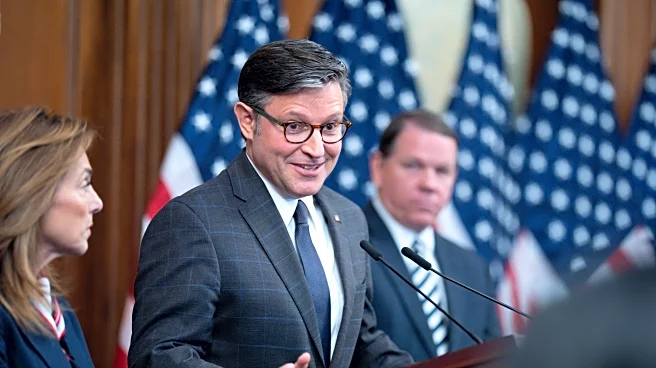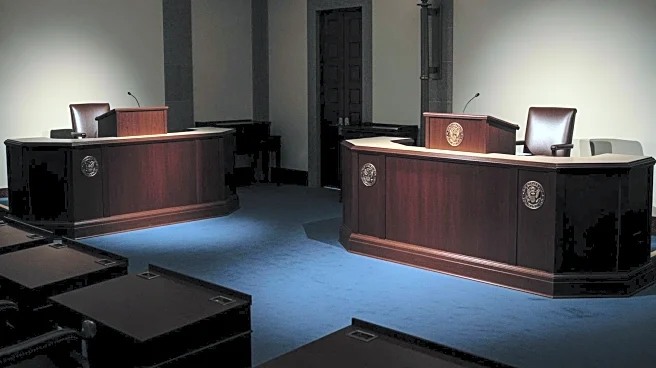What's Happening?
The American Federation of Government Employees (AFGE), the largest union representing federal workers, is urging lawmakers to pass a stopgap funding measure to end the ongoing government shutdown. The shutdown,
which began on October 1, has resulted in over 670,000 federal workers being furloughed and approximately 730,000 others working without pay. The AFGE is calling for a 'clean continuing resolution' to bring employees back to work with full back pay. The shutdown stems from a deadlock between Democrats and Republicans over extending health care subsidies, with neither side willing to compromise. President Trump has used the shutdown to implement mass firings and cancel programs, while his administration has threatened to withhold back pay from furloughed workers.
Why It's Important?
The government shutdown has significant implications for federal workers and the services they provide. With many employees missing paychecks, there is increased pressure on food banks and other support services. The shutdown also affects the functioning of key government agencies, potentially delaying services and impacting public welfare. The AFGE's call for action highlights the urgency of resolving the political impasse to restore normalcy and ensure that federal workers are compensated. The situation underscores the broader political challenges in reaching bipartisan agreements, which can have far-reaching consequences for government operations and public trust.
What's Next?
The AFGE's statement is likely to increase pressure on Senate Democrats to support a House-passed continuing resolution. However, five more Democratic senators would need to vote with Republicans to advance the bill. Democrats have demanded direct negotiations with President Trump to end the shutdown, but Trump has insisted on reopening the government first. The ongoing stalemate suggests that further negotiations and political maneuvering will be necessary to resolve the crisis. The outcome will depend on the willingness of both parties to compromise and prioritize the needs of federal workers and the public.












